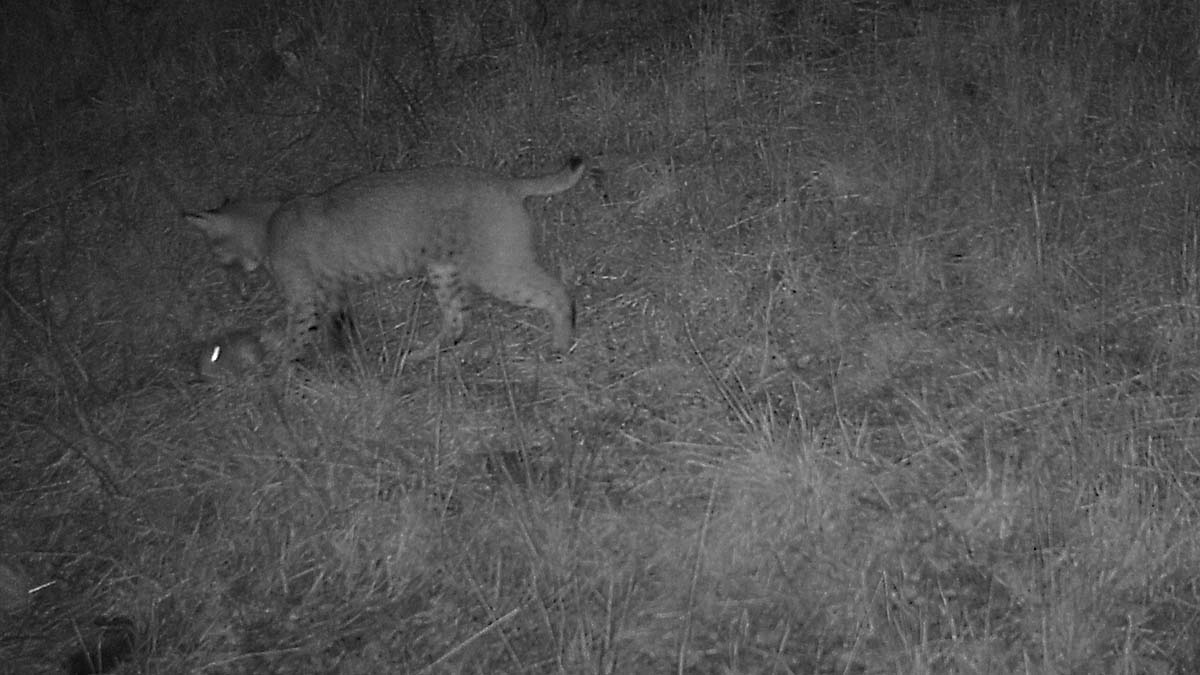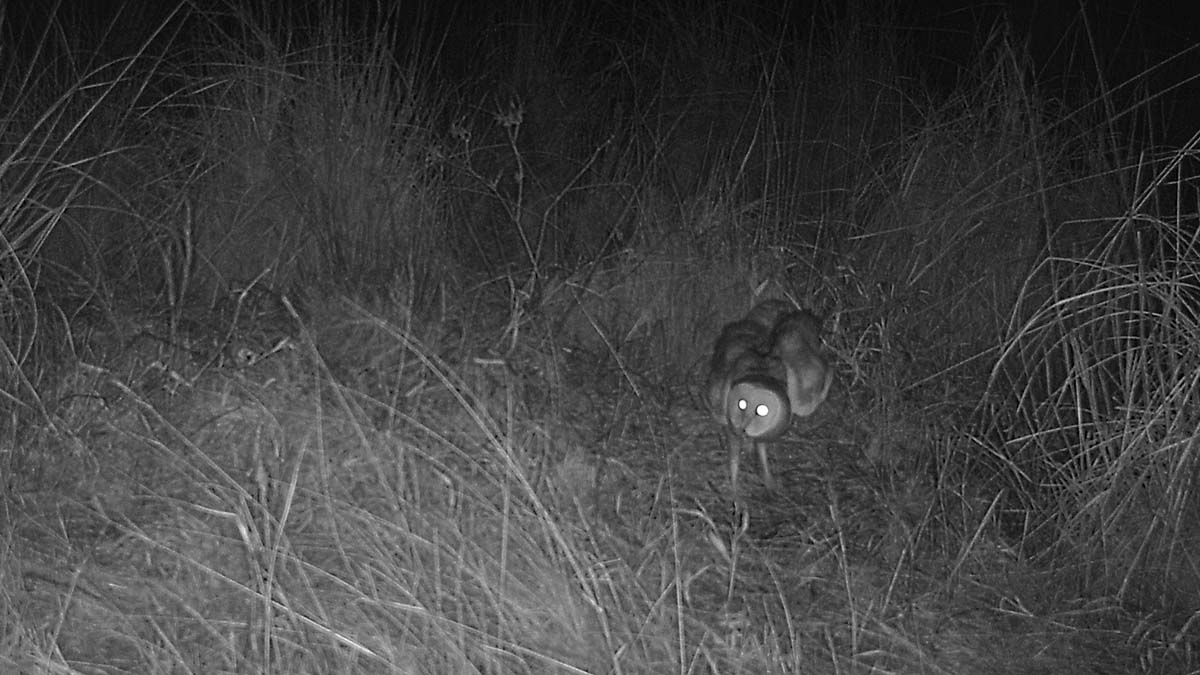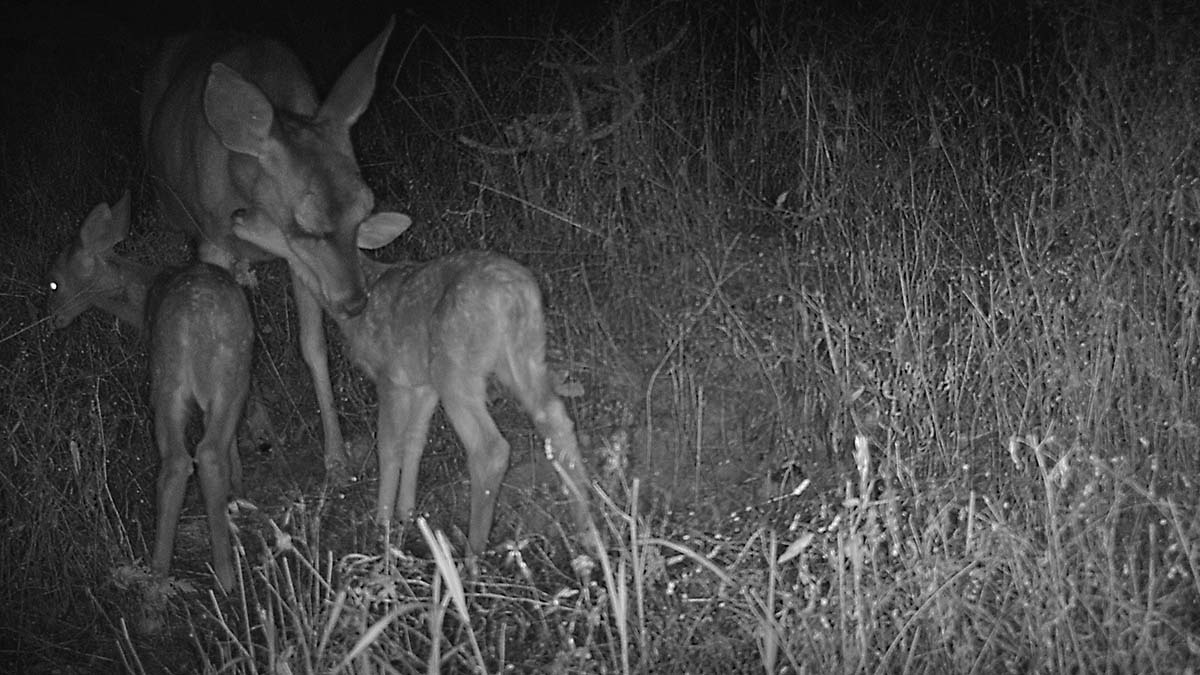Night provides essential habitat for many wildlife species here in the Sky Islands, from bats and owls to rats and ringtails. Over time these species have evolved to see under minimal light, using just the glow of stars and the moon to forage, hunt, communicate, find mates, and range over the landscape. Our Border Wildlife Study cameras do an excellent job of documenting this nocturnal behavior for animals living in and migrating through the San Rafael Valley, a place with its dark sky still intact and relatively free of light pollution.
Every time I see photos of animals carrying on with their normal nocturnal antics under dark skies, I’m grateful that there are still places where wildlife get the night they deserve. In celebration of Dark Sky Week 2023, here are a few of my favorite nocturnal photos from the study.
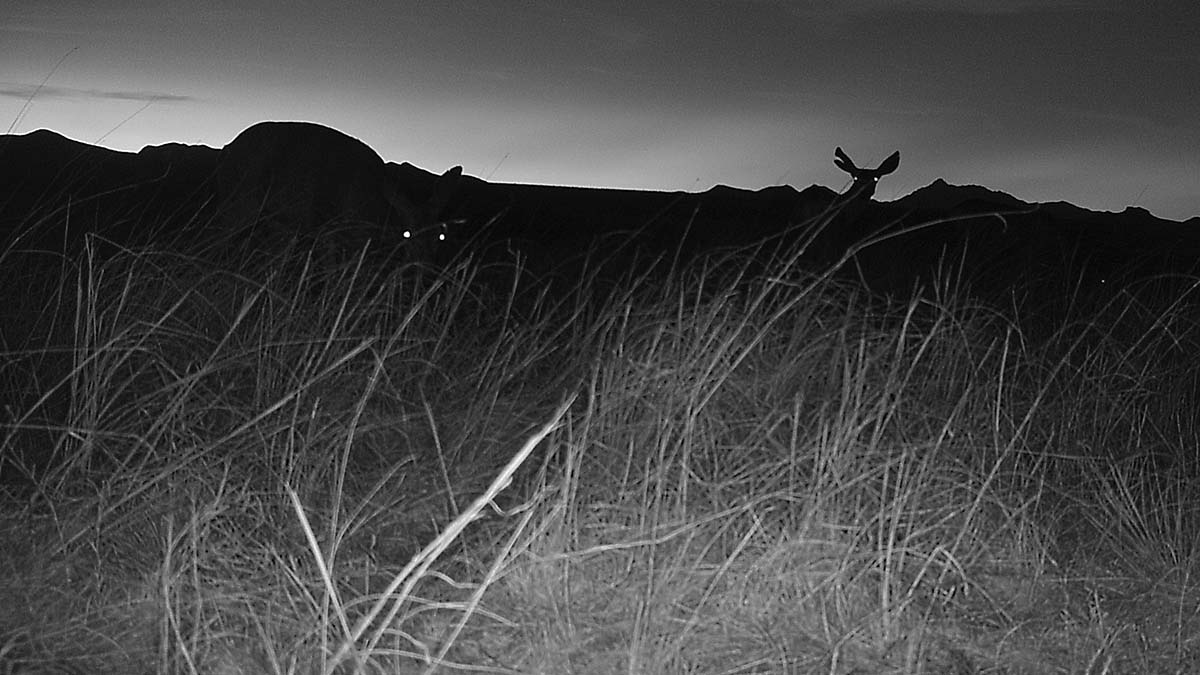
Every night as the Earth spins, twilight and then darkness falls over the land. This pair of mule deer glance toward the camera, and their eyes reflect the soft infrared glow.
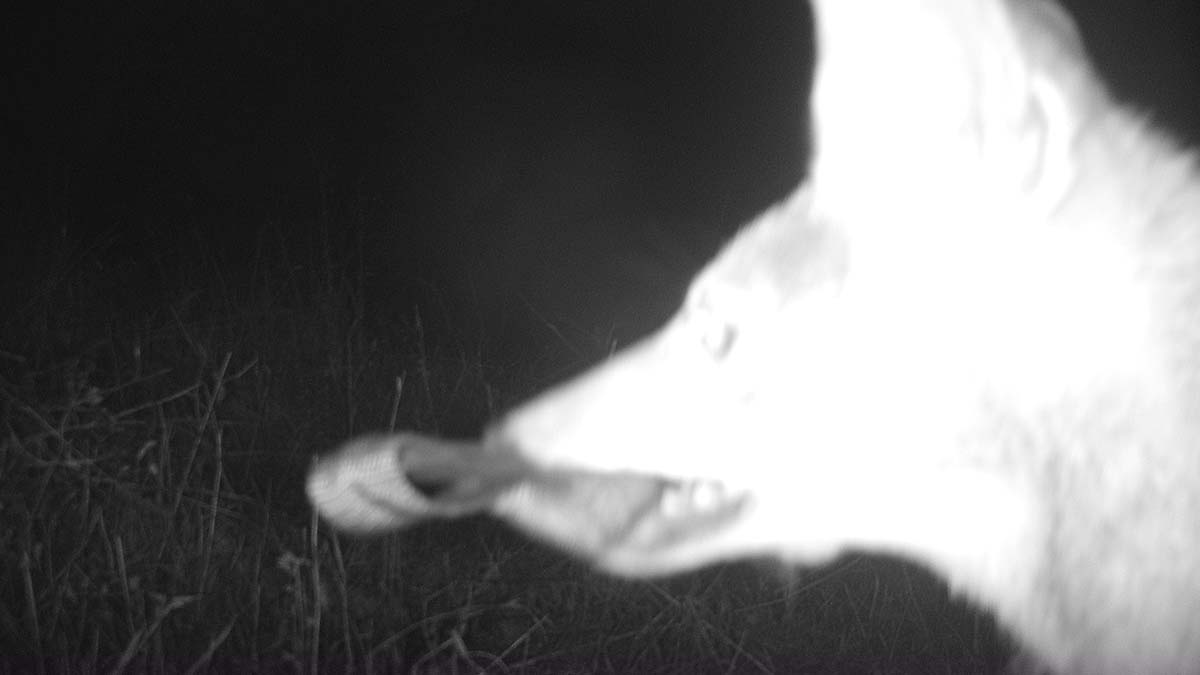
Coyotes are active both at night and during the day, but this particular coyote decided it would run off with one of our wildlife camera straps in the night last October.
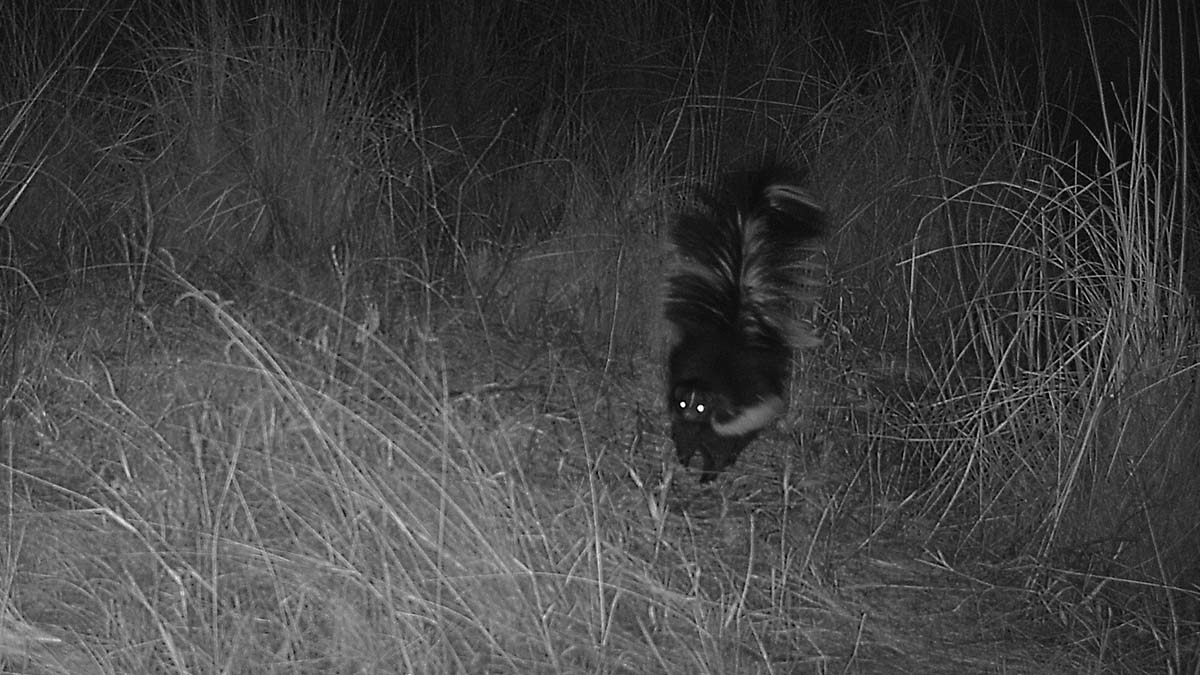
This hooded skunk stands at attention, dressed in a mostly black coat with white stripes along its flank. Hooded skunks are one of four skunk species in the Sky Islands, always found at night. And they have remarkable variation in coat patterns, as you can see in this illustration by our Wildlife Specialist Meagan Bethel.
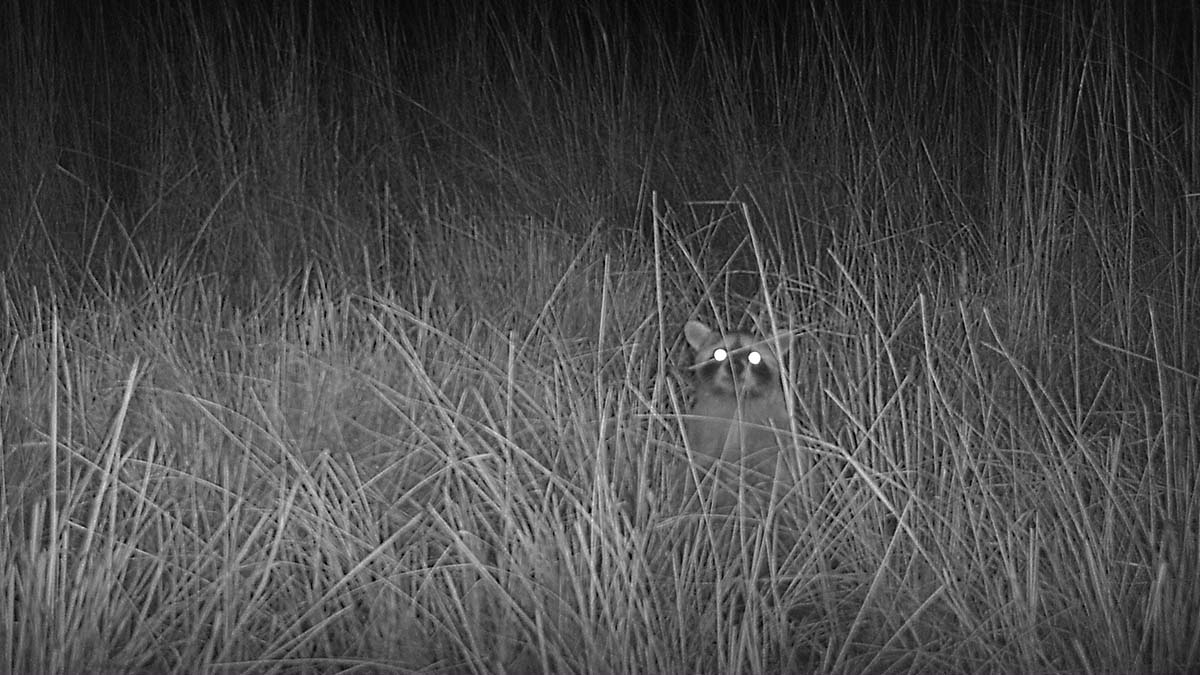
Raccoons are frequent marauders of the night. This one peeks out from between tall grasses of the San Rafael Valley.
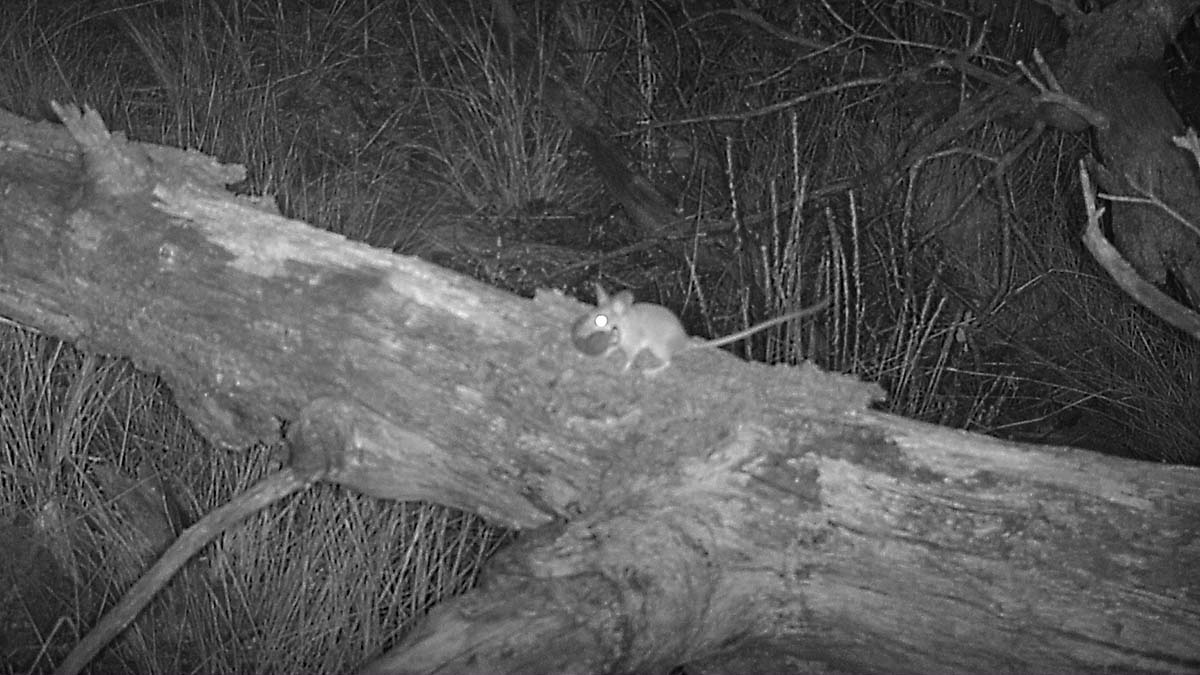
A deer mouse carries a baby across a fallen log under the blanket of darkness. Many rodents emerge from hiding at night when they hope to be less visible to predators.
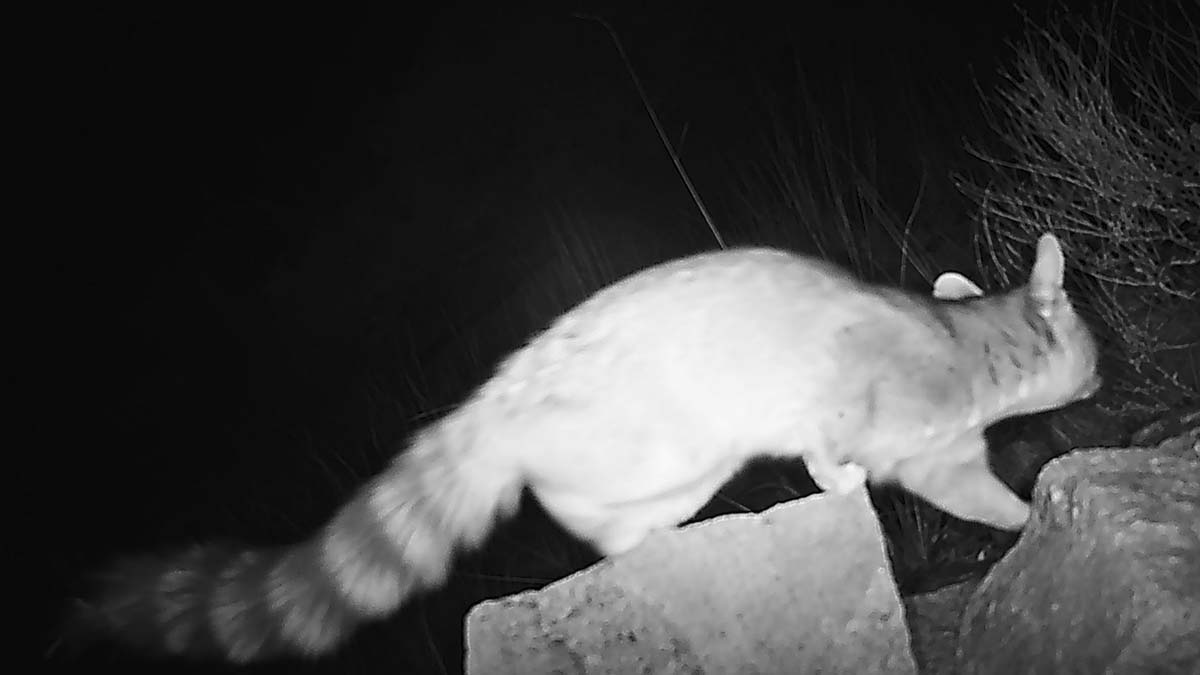
A shy ringtail runs over rocks in front of the camera. This species is one that’s only observed at night, and it’s a fun treat for us to see them and their striped tails. While some people refer to them as “ringtail cats,” these small mammals aren’t cats at all and are actually relatives of raccoons and white-nosed coatis.
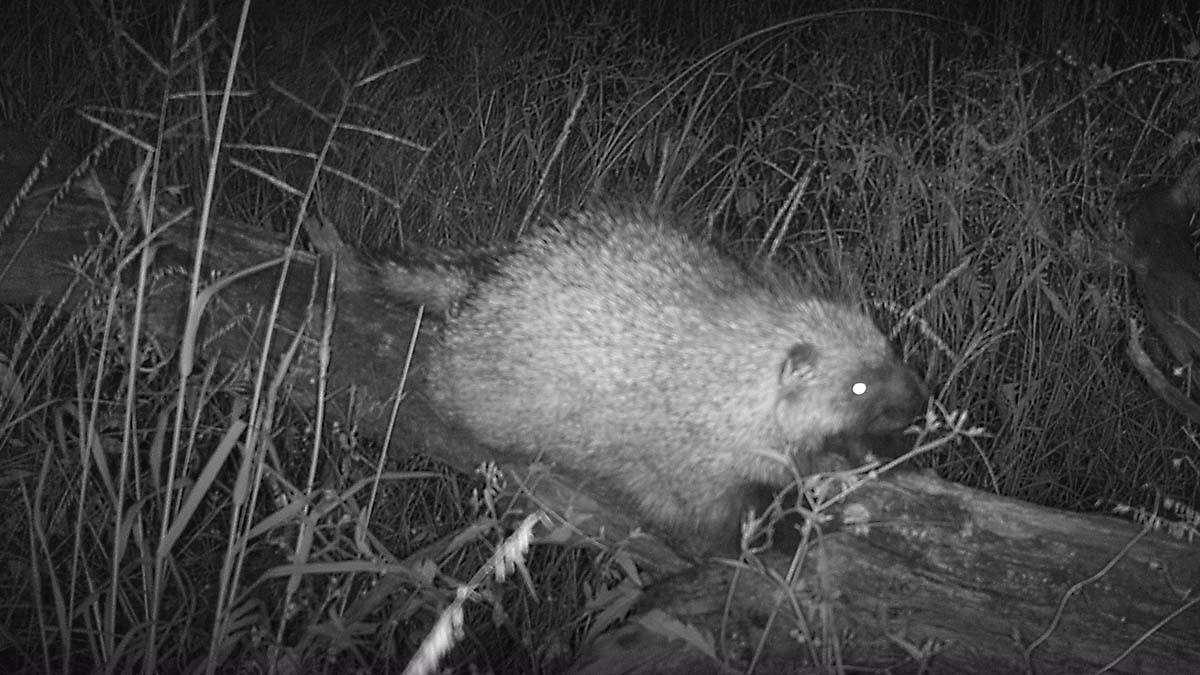
North American porcupines are a rare sight in Arizona and Sonora. These large rodents are most commonly recorded by cameras at night when they move between trees on the ground.

